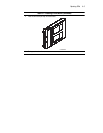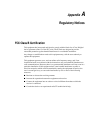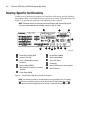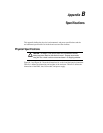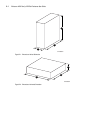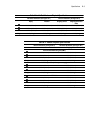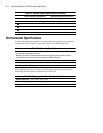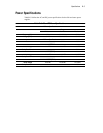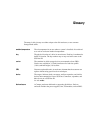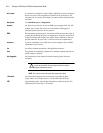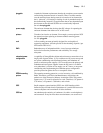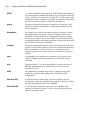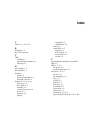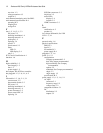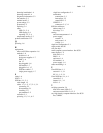Glossary GL–3
pluggable A method of element replacement whereby the complete system remains
on-line during element removal or insertion. There is no data transfers
over the enclosure buses during removal or insertion of an element (the
bus is “quiesced”). No booting or loading of code is permitted except on
the element being inserted. User applications that are not dependent upon
the elements on the affected SCSI bus are not noticeably impacted.
See also hot-pluggable.
power supply The enclosure element that develops that DC voltages for operating the
enclosure elements from either an AC or DC source.
quiesce To make a bus inactive or dormant. For example, you must quiesce SCSI
bus operations when replacing an element without removing power.
See also pluggable.
rack A floor-standing structure primarily designed for, and capable of,
supporting equipment. All racks provide for the mounting of panels. (per
EIA Standard RS-310-C).
RAID Redundant array of independent disks. A set of storage techniques
devised to increase the performance and availability of a storage
subsystem.
redundant power
configuration
A capability of StorageWorks cabinet and enclosures to ensure there is no
single point of power failure. (1) For a cabinet two AC power sources and
two power conditioning units distributed primary and redundant AC
power to enclosure power supplies. (2) For an enclosure, the primary and
redundant enclosure power supplies ensure the DC power is available
even when there is a failure of one supply, one AC source, or one power
conditioning unit. Implementing the redundant power configuration
provides protection against the loss or corruption of data.
RETMA mounting
pattern
The repeating mounting pattern in a vertical mounting rail established by
Radio, Electronics, and Television Manufacturers Association, the
predecessor of the Electronics Industry Association (EIA).This pattern
repeats every 1.75 in and is referred to as a unit. Therefore, a 3U pattern is
5.25 inches; a 4U pattern is 7.00 inches, and so forth.
SCSI Small computer system interface (SCSI). An ANSI interface which
defines the physical and electrical parameters of a parallel I/O bus used to
connect computers and a maximum of 16 bus elements.
SCSI bus An unbroken path consisting of conductors (in cables or on backplanes)
and connectors. Every bus must have two terminators, one at each end.




